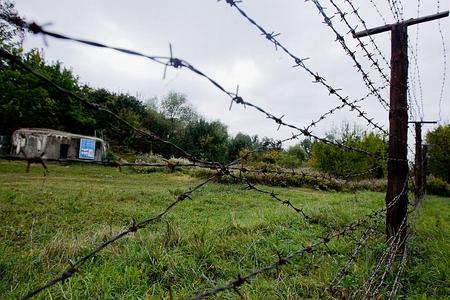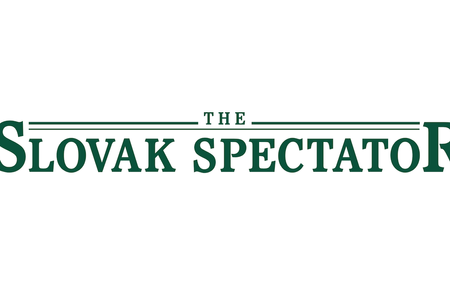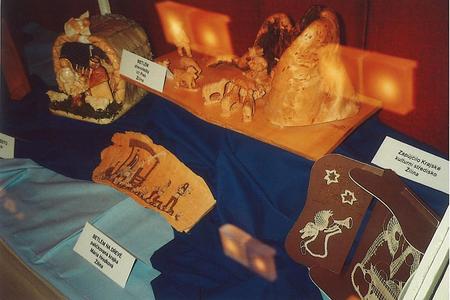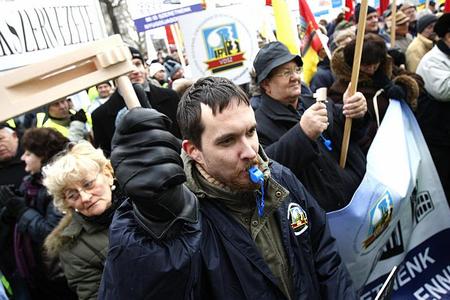Archive of articles - December 2010, page 6
If you desire to read an old article, use the search bar or select the publication date.
Grant opportunities in V4
GLOBETROTTING students and researchers can nowadays enjoy a seemingly endless list of different grants and scholarships; however, those coming from or wishing to study within the Visegrad region have an extra ace in the hole since V4 countries have recently been particularly eager to enhance their ties with the rest of Europe by encouraging young people to leave the comfort zone of their homes and get a taste of life abroad.
A common but contentious history
CENTRAL Europeans like to believe – and historians often confirm their beliefs – that pain has always been part of this region of the continent, which had to struggle most of the time for its own identity, squeezed between the East and the West. The Czech Republic, Slovakia, Hungary and Poland, sometimes self-perceived as allies in order to be the ‘significant other’ for one another, continue to carry historical baggage that divides as well as unites. History that unites The Visegrad countries do have some common historical experiences, said historian István Kollai, a deputy director of the Hungarian Cultural Institute in Bratislava, at the start of an interview with The Slovak Spectator.
Czech Republic
Capital: Prague Area: 78,864 sqkm Population: 10.5 million* Population by ethnic composition: Czech (90.42%), Moravian and Silesian (3.83%), Slovak (1.89%), Polish (0.51%), German (0.38%), Roma (0.11%), Hungarians, Ukrainians, Rusins (Ruthenians), Russians, Greeks, and others (2.86%) Currency: Czech koruna Average monthly wage in 2009: €957.5** Real GDP growth rate: -4.1 percent (2009), 2.4 percent (estimate for 2010)* GDP per capita in Purchasing Power Standards in 2009 (EU-27 = 100): 80* Unemployment rate: 6.9 percent (November 2010)*
New website for Polish-Slovak region
BY NEXT summer a new tourism-oriented information portal should be helping visitors to the Carpathian regions of Poland and Slovakia in finding natural, historical and cultural attractions. The portal called Karpatská Mapa Možností (Carpathian Map of Possibilities) will be
V4 countries share advent traditions
An international festival of advent and Christmas traditions, carols and crafts called Souznění 2010 will take place in several locales in northern Moravia in the Czech Republic, culminating in the city of Ostrava on December 19 and in the Beskydy Mountains and the municipalities of Kozlovice and Václavovice.
No new prosecutor before 2011
PARLIAMENT will not resolve before the end of 2010 the question of who will occupy one of the most powerful positions in Slovakia for the next seven years. The lawmakers will try again in early 2011 after the four-party governing coalition first attempts to change the rules for selection of the general prosecutor from a secret parliamentary vote into a recorded ballot. Robert Fico, the leader of the largest party in parliament, Smer, vigorously criticised the idea put forth by the governing parties, calling it an attempt to “break the back of democracy”. The Slovak Democratic and Christian Union (SDKÚ), the largest party in the governing coalition, said that the change would make it possible for voters to see how the representatives they elected to parliament actually behaved.
Slovakia
Capital: Bratislava Area: 49,035 sqkm Population: 5.4 million* Population by ethnic composition: Slovak (85.8%), Hungarian (9.7%), Roma (1.7%), Czech (0.8%), Ruthenian, Ukrainian, Russian, German, Polish and other (2%) Currency: euro (until 2009, Slovak koruna) Average monthly wage in 2009: €744.50** Real GDP growth rate: -4.8 percent (2009), 4.1 percent (estimate for 2010)* GDP per capita in Purchasing Power Standards in 2009 (EU-27 = 100): 71* Unemployment rate: 14.7 percent (November 2010)* Source: www.visegradgroup.eu, *Eurostat, **SARIO
Divergence in economic paths
WHEN entering the European Union in 2004, the Visegrad Group countries were more or less homogeneous in their development paths. This cannot be considered true any longer as each of the economies in the central European region are now formulating different economic strategies under the changed domestic and international conditions and the deep economic crisis over the past two years has required significant adjustments by all four countries.
Slovakia grapples with reforms
SLOVAKIA saw its leftist prime minister, Robert Fico, move into parliamentary opposition after the general election this June. The four centre-right parties which managed to form a coalition government are expected not only to set the country on a path of reduced public expenditures and a smaller budget deficit but also to deal with numerous complaints about the condition of the country’s judiciary, improve transparency in public administration and attempt to heal what had become a tense bilateral relationship with Hungary.
Rock the boat if you must, but do it in public
CONSUMERS of Slovak news might fairly respond with nausea at being served up one more commentary on the repeated attempts by parliament to pick the man or woman who will serve as general prosecutor for the next seven years.
Joint promotion helps build tourism
VISEGRAD Group member states continue to present their region as an attractive tourist destination and the scope of their joint initiative – branded as European Quartet, One Melody – has been further extended. Earlier this year, national tourist boards travelled as far as China, India and the USA to promote the region, which comprises Poland, the Czech Republic, Hungary and Slovakia. India was identified as a prospective market and the marketing plan of national tourist boards of V4 member countries for 2011 includes strengthening the V4 presence there.
Poland unveils the largest statue of Christ
About 15,000 Christian pilgrims and tourists have participated in the unveiling of the largest statue of Jesus Christ in the world in the western Polish town of Swiebodzin up through the end of November as the town commemorates its 700th anniversary. The statue is 33 metres tall, symbolising the 33 years Jesus lived on earth and weighs 440 tonnes. It is three metres higher than the Christ the Saviour statue in Rio de Janeiro in Brazil, according to the webnoviny internet portal, which added that with its 3-metre crown the total height is 36 metres. Together with its pedestal, the statue towers almost 60 metres with a width of 24 metres across the shoulders.
Smer’s popularity rises, poll finds
SLOVAKIA’S largest opposition party, Smer, enjoyed greater support at the end of October than it did a month earlier, according to the results of a survey carried out by the Median SK polling agency.
ERROR offers international theatre
ERROR ’10 – a festival of homeless theatres – was held on December 3 and 4 in the premises of Štúdio 12 at the Theatre Institute in Jakubovo Square in Bratislava. The 4th year of this international festival of plays performed by homeless and handicapped people consisted of eight theatre groups from Visegrad Group countries – Hungary, Poland, the Czech Republic and Slovakia – and also a special guest from India.
Doing business in the V4
Slovakia enjoys the best environment for doing business among the V4 countries according to the Doing Business 2011 report prepared by the World Bank. Of the 183 evaluated countries, Slovakia placed 41st, down one ranking compared with last year. All three other V4 members improved their positions: Hungary jumped from 52nd to 46th, the Czech Republic moved from 82nd to 63rd and Poland improved its ranking from 73rd to 70th. 41. Slovakia (40) 46. Hungary (52) 63. The Czech Republic (82) 70. Poland (73) Source: Doing Business 2011
Orbán to visit Slovakia
HUNGARIAN Prime Minister Viktor Orbán will pay his first visit to Slovakia as premier on December 14, 2010 for a short working visit during which he will also meet his Slovak counterpart Iveta Radičová, the SITA newswire reported.
“Voter revolution” in Czech politics
THE OVERWHELMING trend in Czech politics in 2010 is what political analyst Jiří Pehe calls a “voters’ revolution,” even if that revolution remained stillborn at the ballot box.
Deputy PM apologises to Malinová
DEPUTY Prime Minister for Human Rights and National Minorities Rudolf Chmel stated that in the case of Hedviga Malinová the right to a just process has been breached by politicians’ premature intervention in the investigation, and thus her human dignity had been harmed.
Hungary's Fidesz party has 2/3 majority
THE ELECTIONS of April 11 and 25 significantly changed the face of Hungarian politics and economy. With 263 seats (over two thirds of a total of 386) in parliament, Viktor Orbán's right-wing party Fidesz ended eight years of rule by the Hungarian Socialist Party (MSZP). Two major parties of the 1989 change of regime, liberal SZDSZ and conservative MDF virtually disappeared. The extreme right made its entrance into parliament, with the Jobbik party gaining 47 seats, a close third-runner to MSZP's 59. Fidesz's sweep to power in 22 of 23 major cities in October's local elections and the parliament's election to the presidency of one-time Fidesz deputy president Pál Schmitt confirmed the rightward shift in Hungarian politics.
Bank deposits guarantee limited
BANK deposits in Slovakia will no longer be covered by an unlimited guarantee, after parliament approved an amendment to the law on deposit protection which sets a limit of €100,000 for guaranteed bank deposits as of the end of 2010, the SITA newswire reported.
- No more photos or bank statements? Slovakia moves to ease residence process
- Convicted of multiple murders, Slovakia’s mafia boss seeks release from prison
- Slovak female triathlete shatters barriers with historic win at Himalayan event
- Top 10 events in Bratislava for foreigners
- Slovakia loses another EV model to Spain as Stellantis chooses Zaragoza over Trnava
- Weekend: Celebration of fun comes to Malacky Photo
- UK appoints Bilal Zahid as new ambassador to Slovakia
- What were the most popular baby names in Slovakia in 2023?
- Top 10 events in Bratislava for foreigners
- No more photos or bank statements? Slovakia moves to ease residence process
- Weekend: Celebration of fun comes to Malacky Photo
- Slovakia loses another EV model to Spain as Stellantis chooses Zaragoza over Trnava
- News digest: Prosecutor seeks jail for NBS Governor Kažimír as his political support wanes
- Slovak female triathlete shatters barriers with historic win at Himalayan event
- Convicted of multiple murders, Slovakia’s mafia boss seeks release from prison
- Slovakia plans to restrict access to new medicines amid funding shortfall
- Maria Theresa on the banks of Bratislava
- No more photos or bank statements? Slovakia moves to ease residence process
- 3 free things to do in Bratislava in the next seven days
- Weekend: Celebration of fun comes to Malacky Photo
- Top 10 events in Bratislava for foreigners
- Digital Jarvis is real now. He is coming for your to-do list
- The disinformation scene has become a tool of media capture
- Paris leads, Bratislava trails: European cities ranked on safe travel for children
- Maria Theresa on the banks of Bratislava
- No more photos or bank statements? Slovakia moves to ease residence process
- A mayor resigns over €2.7 million fraud scandal at town hall
- He designed Gatwick. But this is his masterpiece
- Fico praises China and Vietnam as models, says liberal democracy has failed
- News digest: Violent gang in Bratislava is under arrest
- The Kremlin’s security agency has a Russian contractor in Slovakia - no one has noticed
- 3 free things to do in Bratislava in the next seven days
- News digest: Prosecutor seeks jail for NBS Governor Kažimír as his political support wanes
- Slovakia loses another EV model to Spain as Stellantis chooses Zaragoza over Trnava
- Slovak female triathlete shatters barriers with historic win at Himalayan event
- Weekend: Celebration of fun comes to Malacky Photo
- News digest: Fico’s bloc wants to save money by restricting electoral access
- Slovakia plans to restrict access to new medicines amid funding shortfall
- No more photos or bank statements? Slovakia moves to ease residence process
- Top 10 events in Bratislava for foreigners More articles ›







